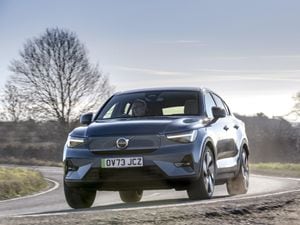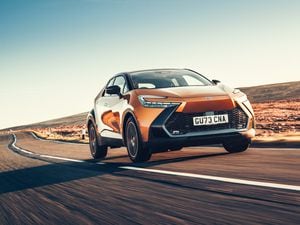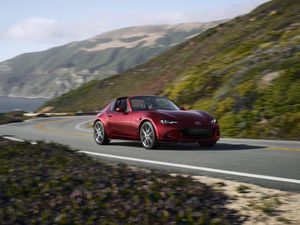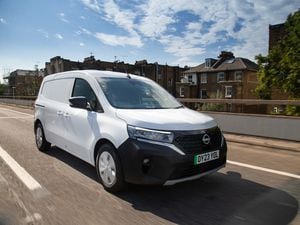First Drive: Does Volkswagen’s ABT e-Transporter showcase the future of electric vans?
The ABT e-Transporter brings an electric powertrain to VW’s ever-popular van – but is it a successful switch? Jack Evans finds out.
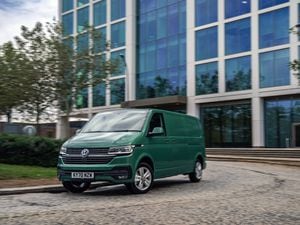
What is it?

>
Vans make the world go around. Here in the UK, thousands of vans are relied upon each day for every task imaginable which highlights their need to be as reliable and efficient as possible. The switch to electric power in the van world is a tricky one as time is money – and a van sitting still charging isn’t pulling its weight.
But of course, electric powertrains need to be integrated into vans in order to progress. One of the latest firms to take this challenge on is Volkswagen, which in partnership with German firm ABT e-Line has created an electric version of the firm’s ever-popular Transporter. Let’s take a look at it.
What’s new?

>
Volkswagen has gone down the route of making the electric Transporter – or e-Transporter, as we should call it – look and feel as normal as possible, so save for a number of choice exterior badges you’d be really pushed to differentiate it from the regular model. It’s the same story inside, as the location of the electric motor and batteries ensures that the loading capacity is left undisturbed and matches that of a standard diesel or petrol version.
It’s based on the long-wheelbase Transporter too and can be specified in either panel or Kombi crew-van layouts. In truth, the options are just as flexible as with a regular Transporter.
What’s under the bonnet?

>
The powertrain of the e-Transporter has been carefully packaged to ensure that there’s no impact on practicality. It’s why you’ll find the 109bhp electric motor located under the van’s bonnet, while the 37.3kWh – 32.5kWh useable – battery is placed into the floor behind the front axle. In a break from the norm, the e-Transporter retains the regular van’s DSG automatic gearbox, which does help to give it an even more ‘regular’ feel.
Zero to 60mph is certainly leisurely at 17.1 seconds and though Volkswagen claims that the van’s official top speed is 56mph, we found that it would happily exceed that. Of course, the crucial aspect here is range and it’s in this department that the e-Transporter falters. It can return just 82 miles from a single charge, though mercifully 50kW charging capability means a 0-80 per cent charge can be managed in just 45 minutes. Plugging into a 7.2kW home wallbox will result in a full charge in around five and a half hours.
What’s it like to drive?
Though the cabin and lofty view from the front are the same, the e-Transporter feels smoother, more refined and more high-end than its petrol and diesel-powered stablemates. Of course, remove a trusty 2.0-litre diesel engine and replace it with an electric motor and it’s bound to be quieter, but the transformation is really quite pleasant. The fitment of the DSG gearbox also means that it doesn’t feel too alien to drive, either.
The ride is decent enough, too, and though that acceleration isn’t exactly pacey it’s quick enough to keep up with traffic. But boy, does that range tumble if you head out of the city or town. Get onto the motorway and it drops off a cliff rather quickly, leaving you to quickly consider where your next charger is located. That said, if you could time your loading and unloading with a charge, then it might be less of a hassle than you might think.
How does it look?

>
As we’ve already highlighted, the exterior look of the e-Transporter is largely unchanged in its transition to electric power. We’ve got some small badges here and there, but this is one discreet EV. Save for the lack of any engine noise, you’d be hard-pressed to pick it out as anything different as it went past.
The charging port for the car is even located where the fuel filler is usually found, right by the passenger side door. Now, this switch might be a logical one, but we discovered that its placement here makes public charging really difficult. With most charging points designed to offer up their cables to cars parked either nose- or tail-in, getting the e-Transporter close enough to top up can prove to be a real headache. Ideally, we’d like to see it placed in a more practical location, particularly given how tight the areas where chargers are located usually are.
What’s it like inside?

>
The interior of the e-Transporter sends up a really pleasant combination of usability and nicely finished materials. There are plenty of cubbies and storage options, while the seating position is the most car-like you’ll find in the van world – something the Transporter has always offered. Everything feels well made and robust, which is just what you want from a working van.
In terms of load area, the e-Transporter matches the regular van. However, because of the fitment of the batteries which add to the van’s weight, its outright payload is reduced to 996kg – down from the regular van’s maximum of 1,309kg. However, a real plus point is that the e-Transporter is rated to tow up to 1,500kg – though doing so will, of course, make a real dent in the range.
What’s the spec like?

>
All e-Transporter models get a decent level of standard equipment, with a 6.5-inch colour touchscreen infotainment system included on every model. You also get a dual-passenger bench seat, heated front seats and a leather-trimmed multifunction steering wheel as standard on all models, so it really doesn’t feel bare-bones, to begin with.
You can opt for ‘Advance’ versions, which bring 17-inch alloy wheels, LED headlights and electrically foldable door mirrors. An additional 12-volt socket in the dashboard is a handy inclusion, while parking sensors at both front and rear make positioning the van a whole lot easier.
Verdict
The e-Transporter comes close to being one of the better models in the range to drive. Certainly, it’s the most refined, with the quiet electric powertrain and classy on-road mannerisms helping to elevate the overall feel of the van experience.
But that narrow electric range might prove too much of a hurdle for many drivers. Of course, inner-city van owners – at whom the e-Transporter is directed – might be able to deal with the lack of range, but those who venture further afield will no doubt find it too much of a hindrance.


